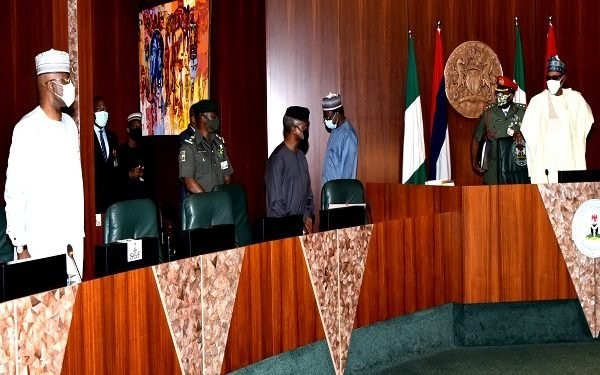FEC approves more borrowings from CBN

The new borrowing strategy of the federal government will come from Promissory Notes to be issued to settle Government Arrears; and the Ways and Means Advance at the Central Bank of Nigeria.
The Ways and Means (W&M) facility functions as the government’s overdraft account with the Central Bank of Nigeria- the facility which enables cash advances from the CBN to the government.
According to the CBN: “When the Federal Government exceeds its revenue the CBN finances government deficit through Ways and Means Advances subject (in some cases) to the limits set existing regulations”.
The CBN on its website stated: “The direct consequence of Central Banks financing of deficits are distortions or surges in monetary base leading to adverse effect on domestic prices and exchange rates i.e. macroeconomic instability because of excess liquidity that has been injected into the economy”.
A statement by the Debt Management Office (DMO) regarding the new borrowing strategy noted total public debt as a percentage of the nation’s GDP will increase from 25 percent to 40 percent “in order to accommodate new borrowings to fund Budget Deficits and other obligations of Government”.
This ratio, the DMO, said: “is still well below the World Bank/ International Monetary Fund (WB/IMF’s) recommended threshold of 55 percent for countries in Nigeria’s peer group”.
The DMO added that from 2020 to 2023 when this new borrowing strategy is supposed to last, “borrowing will be from domestic and external sources but a larger proportion of new borrowing will be from domestic sources using long-term instruments while External Borrowing will be prioritized concessional funding from multilateral and bilateral sources”.
Portfolio Composition from 2020 to 2023, the DMO, said will be in the mix or ratio of Domestic 70 percent: External 30 percent.
This, the DMO said, is “to further strengthen the domestic debt market and optimize access to both Concessional and Commercial sources of funding”.
With regards to refinancing new debts, the DMO said the government will be doing an average Tenor of Debt Portfolio of 10 years minimum while long-Term to Short-Term Domestic Debt Mix will be in the ratio of 75%:25%.
DMO said this “is to sustain the issuance of longer-tenored instruments with tenors of 10 years and above, in order to effectively manage refinancing risks”.
The implementation of the Medium-Term Debt Management Strategies over the years the DMO stated, “has helped in managing the structure of the growing public debt, and ensured debt sustainability, as well as effectiveness in public debt management”.
The DMO assured that the Strategy will be implemented to support economic development while ensuring that the Public Debt is sustainable”.
The Medium-Term Debt Management Strategy (MTDS) is a policy document that provides a guide to the borrowing activities of the government in the medium-term, usually four (4) years.
It is recognized as one of the best practices in public debt management and is recommended by the World Bank (WB) and International Monetary Fund (IMF) to ensure that public debt management is driven by a well-articulated Strategy that is structured to meet a country’s broader macroeconomic and public debt management objectives.
The MTDS, 2020-2023 was prepared by the Debt Management Office (DMO) in collaboration with the Federal Ministry of Finance, Budget and National Planning; Central Bank of Nigeria; Budget Office of the Federation; National Bureau of Statistics and the Office of the Accountant-General of the Federation.
According to the DMO, “Nigeria has had two (2) Medium Term Debt Management Strategies (2012-2015 and 2016-2019), prior to the current Strategy”.
The new strategy, it said, “had to be re-worked to reflect the global and local economic impact of the COVID-19 Pandemic and incorporates data from the revised 2020 Appropriation Act and the Medium-Term Expenditure Framework 2021-2023. Thus, the new MTDS adequately reflects the current economic realities and the projected trends”.

